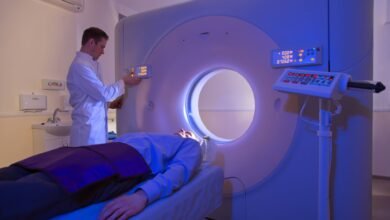Understanding Diag Image: What They Are and Why They Matter

When it comes to understanding our health, seeing is believing. That’s where diagnostic imaging, or Diag Image, comes into play. These powerful visual tools provide a window into the human body, revealing hidden issues that traditional examinations might miss. From X-rays to MRIs, diagnostic imaging has revolutionized how medical professionals diagnose and treat conditions.
But what exactly are Diag Images? Why do they matter so much in modern medicine? Join us as we explore their significance, the various types available, and how they impact patient outcomes. Whether you’re a healthcare professional or someone curious about your own health journey, this guide will shed light on the fascinating world of diagnostic imaging.
The Importance of Diagnostic Imaging
Diagnostic imaging plays a pivotal role in modern healthcare. It allows doctors to visualize the internal structures of the body without the need for surgery or invasive procedures. This capability is crucial for accurate diagnosis, effective treatment planning, and continuous monitoring of patient progress.
By providing clear, detailed images, Diag Images help identify conditions early — sometimes even before symptoms appear. Early detection can lead to faster interventions, better outcomes, and increased chances of recovery.
Moreover, diagnostic imaging enhances communication among healthcare providers. Radiologists, surgeons, and physicians can collaborate more effectively when they share the same visual data. This teamwork ensures that patient care remains coordinated, accurate, and timely.
Beyond clinical practice, diagnostic imaging also drives research and innovation. It plays a major role in the development of new treatments, surgical techniques, and pharmaceuticals. As healthcare moves toward precision medicine, the importance of imaging in tailoring care to individual patients continues to grow.
Types of Diagnostic Images
Diagnostic imaging encompasses a wide range of technologies, each designed for specific medical purposes. Here are the most common types:
-
X-rays:
Among the oldest and most widely used imaging techniques, X-rays are ideal for detecting bone fractures, infections, and dental issues. They provide fast results and are often the first step in many diagnostic processes. -
Ultrasound:
Using high-frequency sound waves, ultrasound imaging creates real-time visuals of soft tissues and organs. It’s well-known for monitoring pregnancies but is also used to examine the heart, liver, kidneys, and blood flow. -
MRI (Magnetic Resonance Imaging):
MRI employs magnetic fields and radio waves to produce detailed images of the body’s internal structures. It’s particularly effective for visualizing the brain, spinal cord, muscles, and ligaments. -
CT (Computed Tomography) Scans:
CT scans combine multiple X-ray images to produce cross-sectional views of the body. They are invaluable in detecting tumors, internal injuries, and vascular diseases. -
Nuclear Medicine Imaging:
This method uses small amounts of radioactive material to assess how organs and tissues function. It’s useful for diagnosing cancers, heart disease, and thyroid disorders.
Each of these imaging modalities offers unique insights, contributing to a comprehensive understanding of a patient’s health condition.
How Diag Images Are Used in Medical Diagnosis
Diag Images serve as the foundation for countless diagnostic procedures. They allow physicians to see what’s happening inside the body and identify abnormalities that might otherwise remain undetected.
For example:
-
X-rays can reveal bone fractures, infections, or lung conditions like pneumonia.
-
MRIs can detect tumors, nerve damage, or brain disorders such as multiple sclerosis.
-
Ultrasound scans can help evaluate organ function, blood flow, and pregnancy progress.
-
CT scans can pinpoint internal bleeding, cancers, or heart disease.
These images guide doctors in making accurate diagnoses and selecting the most appropriate treatment plans. They are also vital in tracking the progress of ongoing treatments — helping to determine if a condition is improving, stable, or worsening.
Benefits and Limitations of Diag Images
Benefits:
-
Non-invasive diagnostics: Most imaging techniques don’t require surgery, reducing pain and recovery time.
-
Early detection: Imaging can reveal issues before symptoms develop.
-
Improved accuracy: Visual evidence supports more precise diagnoses.
-
Better treatment planning: Images help doctors customize care for each patient.
-
Ongoing monitoring: Doctors can track progress and adjust treatment as needed.
Limitations:
-
Radiation exposure: Techniques like X-rays and CT scans involve small doses of radiation, which must be managed carefully.
-
Cost and accessibility: Advanced imaging technologies can be expensive and may not be available everywhere.
-
Interpretation errors: While rare, incorrect readings can occur if images are unclear or misinterpreted.
-
Patient discomfort: Some scans, like MRIs, can be noisy or require remaining still for long periods.
Despite these limitations, the benefits of diagnostic imaging overwhelmingly outweigh the risks when used appropriately under medical guidance.
Common Diagnostic Imaging Procedures
Here are a few examples of how diag images are used in everyday medical practice:
-
Chest X-ray: To assess lung infections, heart size, or broken ribs.
-
Abdominal Ultrasound: To detect gallstones, liver disease, or kidney problems.
-
Brain MRI: To identify strokes, tumors, or neurological conditions.
-
CT Angiography: To examine blood vessels for blockages or aneurysms.
-
Mammography: To detect early signs of breast cancer.
Each of these procedures contributes to accurate diagnosis, faster intervention, and improved patient outcomes.
Emerging Technologies in Diagnostic Imaging
The future of diag images is being shaped by cutting-edge innovations that promise faster, safer, and more accurate results.
-
Artificial Intelligence (AI): AI-powered systems can analyze vast amounts of imaging data quickly, helping detect patterns that may be missed by the human eye.
-
3D and 4D Imaging: These technologies allow doctors to view organs and tissues in three dimensions, providing a clearer perspective for surgical planning.
-
Portable Imaging Devices: Handheld ultrasound and mobile X-ray units are making high-quality diagnostics accessible in remote and emergency settings.
-
Molecular Imaging: This technique visualizes cellular activity, enabling early detection of diseases at the molecular level.
-
Virtual and Augmented Reality (VR/AR): Used in training and surgical simulations, VR and AR provide interactive experiences for understanding complex anatomical structures.
As these technologies continue to evolve, they hold the potential to make medical diagnostics faster, more accurate, and more widely available.
Conclusion
Diagnostic imaging — or Diag Image — is one of the cornerstones of modern medicine. It enables healthcare professionals to look inside the human body without surgery, leading to more accurate diagnoses, better treatment outcomes, and enhanced patient care.
From simple X-rays to advanced AI-assisted scans, these technologies continue to evolve, shaping the future of healthcare. For patients, understanding how diag images work and why they matter can provide greater confidence and awareness during their medical journey.
As innovation continues, diagnostic imaging will remain at the heart of early detection, precise treatment, and medical discovery — truly making it one of the most powerful tools in the field of healthcare.




